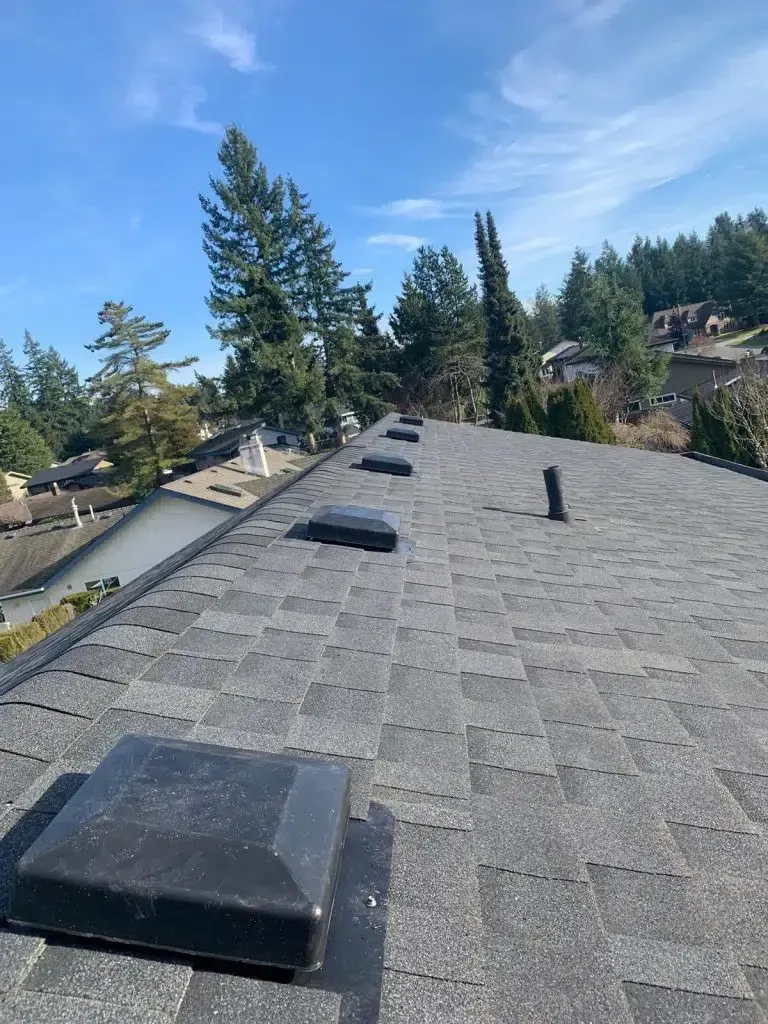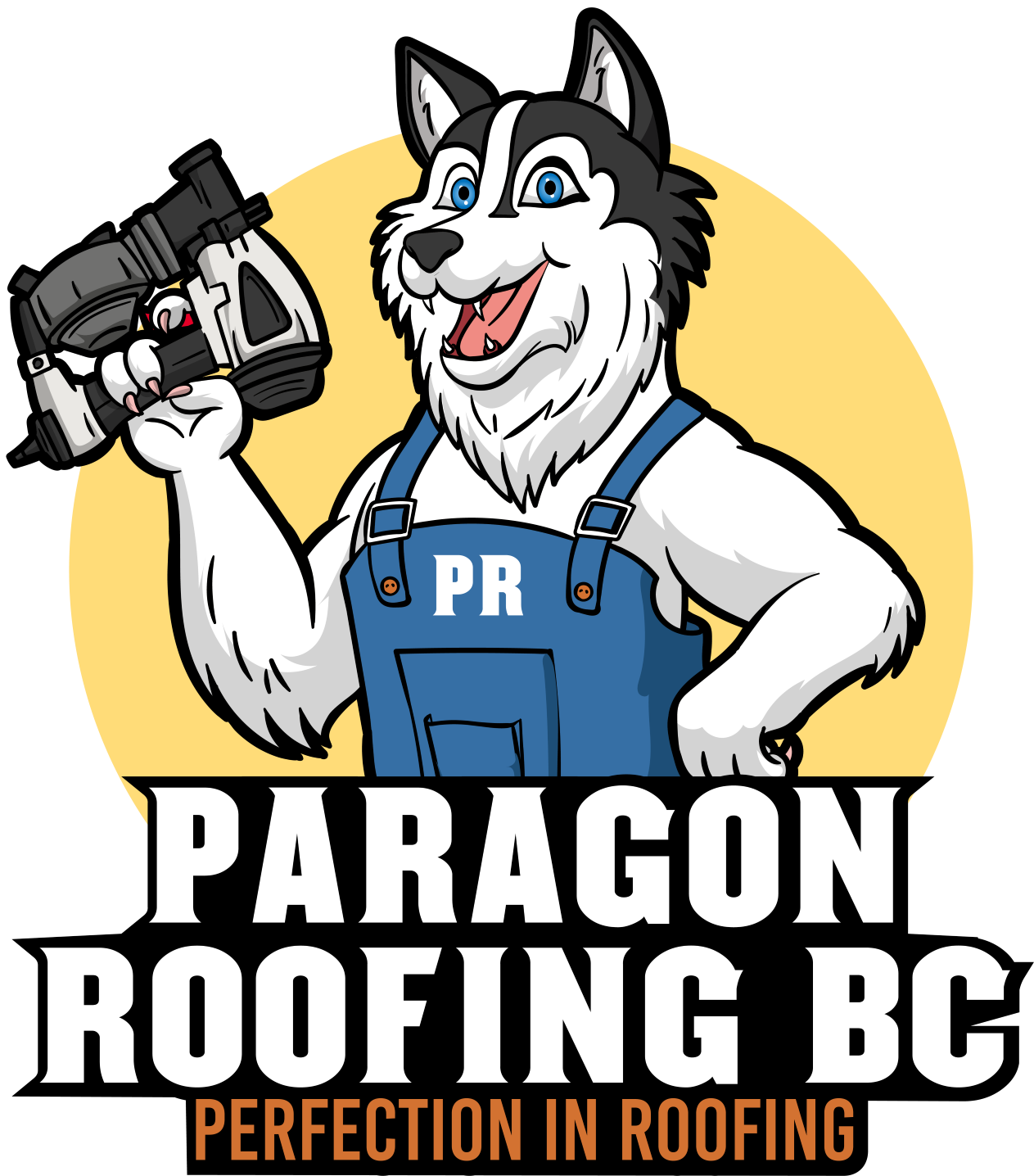How Often Should You Inspect Your Roof in Burnaby?
A solid rule-of-thumb for Burnaby homes is twice a year —once every spring and again each fall—plus an extra check after any windstorm or heavy snowfall. That schedule answers the exact query “How Often Should You Inspect Your Roof in Burnaby?” and keeps small problems from mushrooming.
- Inspect every spring after winter rain.
- Re-inspect each fall before storm season.
- Check after wind gusts >70 km/h.
- Scan attic immediately after leaks.
- Document findings with photos for warranties.
| Factor | Interval | Note |
|---|---|---|
| Typical asphalt roof | Every 6 months | Burnaby’s rain accelerates wear |
| Metal or torch-on | Annually | Fewer seams, slower aging |
| Roof older than 15 yrs | Quarterly | Materials become brittle |
Burnaby’s skies do not forgive procrastination. Positioned between Burrard Inlet and the North Shore mountains, the city soaks up more than 1,300 mm of rain in a wet year and endures 150+ rainy days on average. That moisture seeps beneath shingles, swells plywood, and feeds moss faster than you can binge a weekend series. Waiting for stains to appear inside is, frankly, an invitation for rot.
1. Climate Realities: Why the Clock Ticks Louder Here
Pacific air streams slam warm, wet fronts against Burnaby slopes, producing sideways rain one month and wet snow the next. Even on a “mild” coast, freeze-thaw cycles at higher elevations—think Burnaby Mountain—pry open nail holes and gutter seams. Water’s relentless repetition explains the bi-annual baseline: spring reveals winter’s hidden bruises; fall primes defenses before another monsoon rushes in.
But climate is only chapter one. Roofing materials, roof pitch, nearby cedars dropping needles—each writes its own subplot in the grand novel of maintenance schedules.
2. Material Matters: Matching Frequency to Roof Type
Asphalt-shingle roofs dominate Burnaby’s post-war neighbourhoods, and they age like denim—serviceable till threads fray, then suddenly shot. For them, six-month inspections are non-negotiable.
Torch-on or SBS membrane systems covering low-slope additions shrug off UV better; an annual check suffices unless hail or foot traffic intrudes. Metal standing-seam roofs, gleaming atop new infill builds near Metrotown, are tougher still, yet fasteners must be tightened every year because thermal expansion never sleeps.
Quick cue: If you can’t remember when that last inspection happened, it’s already overdue.
3. Seasons of Scrutiny: Building a Local Calendar
Spring (March–May)
The city’s late-season gales rip ridge caps while pine pollen clogs scuppers. Inspect after the final frost to catch cracked caulking, loose flashing, and winter ice-dam scars.
Summer (June–August)
Counter-intuitive, perhaps, but August heat bakes tar strips. A mid-summer attic peek with a moisture meter can expose hidden condensation before mold fluoresces green.
Fall (September–November)
Leaves blanket the roof like a wet quilt. Clean valleys, reseal exposed fasteners, and verify that plumbing-vent boots still hug pipes.
Winter (December–February)
When snow loads arrive—and yes, Burnaby does see snow—hydrate shingles chill, freeze, and fatigue. After any melt-freeze loop, do a binocular check for lifted tabs.
Mix in ad-hoc inspections after events the insurance industry calls “significant”: wind gusts above 70 km/h, hailstones bigger than a toonie, or ice storms thick enough to lace tree limbs.
4. DIY Versus Pro: Drawing the Safety Line
An owner armed with gloves, ladder stabilizer, and zoom lens can spot curled shingles, rusted vents, and sagging gutters from the eaves. But professionals don’t just look— we probe. At Paragon Roofing BC our Burnaby crew follows a 42-point checklist: pulling a shingle to inspect nail penetration depth, infrared-scanning soffits for heat loss, and measuring granule loss by weight per square foot.
Cut corners here and warranties evaporate. Many manufacturer warranties stipulate “annual documented inspections” as a condition of claim approval—fine print easy to miss until hail the size of golf balls starts quoting it back to you. For help that meets every line of that fine print, reach out to our trusted Burnaby roofers.
5. The Economics of Early Detection
Picture two neighbours on Gilmore Avenue. House A books semi-annual inspections at $250 each; in year six, we reseal three vents for $180. House B skips inspections to “save cash.” By year six, moisture has soaked OSB decking; rot demands a $7,400 sheathing replacement before shingle install can even start. The math is not subtle.
| Scenario | Six-Year Cost | Outcome |
|---|---|---|
| Preventive Plan | $1,680 | Roof lasts 22 years |
| Wait-and-See | $7,400 + full reroof | Roof fails at 14 years |
6. Age and Risk Curve
Roof age is a biological clock of sorts. Under 10 years? Stick with the spring/fall cadence. Hit the 15-year mark—Burnaby’s rain-drenched equivalent of middle age—and quarterly walk-arounds discover fissures before they breed leaks. Beyond 20 years, inspections morph into hospice care: plan replacements, not miracles.
7. Local Red Flags Every Inspector Hunts
- Moss mats thriving on north-facing slopes
- Black algae streaks disguising shingle deterioration
- Popped nails where plywood swells then contracts
- Rust halos around chimney counter-flashing
- Blocked scuppers on flat decks above secondary suites
These symptoms appear earlier here than in drier inland cities. Our sodium-rich marine air amplifies galvanic corrosion; cedar debris from towering property-line trees invites fungal rot.
8. Storm-Triggered Protocol
When Environment Canada issues a wind warning, prep a post-storm routine:
- Wait until winds subside.
- Walk the perimeter—scan for shingle shards, metal fragments, or torn membrane strips.
- From ground level, angle binoculars along valley lines looking for displaced flashings.
- Check attic interior—dark staining or daylight slivers betray openings.
- Photograph everything; timestamps aid insurance dialogues.
If damage seems likely, call a certified roofer within 48 hours. Insurance adjusters love swift documentation; they loathe delay.
9. Inspection Tools of the Trade
- Moisture meter: Reads %MC in sheathing; >20 % forecasts rot.
- Thermal camera: Highlights insulation voids under 5 °C differentials.
- Drones: Capture ridge-line imagery without footfall.
- Hand-held annular probe: Checks fastener torque on metal systems.
- Endoscope: Snakes beneath flashings to view concealed rust.
Homeowners often borrow drones but omit moisture metrics; that blind spot lets hidden decay festoon rafters.
10. Regulatory Backdrop & Liability
While the 2024 BC Building Code governs new installations, it also imposes maintenance responsibilities: materials “must continue to perform” their intended function. Negligence in inspections can shift liability. Landlords, take note—Section 28 of the Residential Tenancy Act compels “good repair” including the roof. Failure invites monetary orders from the Residential Tenancy Branch.
11. Case Files From the Paragon Notebook
Case 1: Leaf-Choked Hidden Valley
A Brentwood bungalow with a fifteen-year-old laminate shingle roof showed no external leaks. Infrared scanning, however, uncovered cold streaks where saturated insulation slumped. The owner’s last inspection? Five years prior. We replaced three sheets of decking—but spared a full reroof.
Case 2: Wind-Torn Metal Ridge
In Capitol Hill, a December squall peeled back a 30-ft ridge cap on a standing-seam roof. Bi-annual reports had traced micro-loose fasteners; the owner green-lit a preventative re-torque two months earlier. Result: holes never formed; repairs cost $320, not $3,200 in water damage.
12. Frequently Asked Follow-Ups
Does moss removal count as an inspection?
No. Moss removal is maintenance; inspection is diagnosis. Both matter, but only the latter catches failing underlayment.
Can I skip spring checks if winter was mild?
Skip at your own peril. Winter sun still ages shingles; animals may nest under loose flashing.
Will drone images satisfy warranty terms?
Only if a credentialed inspector reviews them and issues written findings.
13. Building an Inspection Logbook
Create a binder—or digital folder—with:
- Date-stamped photos (ridge, valleys, penetrations)
- Measured moisture content readings
- Repair receipts
- Inspector’s credential ID
This dossier proves diligence, elevating resale value when buyers inevitably ask, “How’s the roof?”
14. Myth-Busting the ‘New Roof Immunity’
New homeowners in Burquitlam often assume a 30-year shingle warrants a decade of ignoring the roof. Wrong. Warranty lengths reflect lab conditions, not Burnaby’s salt-laden squalls. Manufacturers will void claims faster than rain off a slope if maintenance docs are absent. Semi-annual checks build the paper trail you’ll need.
15. Sustainable Roof Stewardship
A well-inspected roof isn’t just personal protection; it’s climate stewardship. Every additional year squeezed from a roof averts tonnes of asphalt shingles heading to the Cache Creek landfill. Schedule might prevent the need for tear-off by enabling in-situ rejuvenation coatings.
16. Conclusion: Vigilance Is Cheaper Than Plywood
Burnaby’s roofs age in dog years. Moisture, moss, and Pacific gales conspire against them. Abide by the simple cadence—twice yearly plus after major storms—and you’ll outrun that conspiracy. From an expert roofer’s standpoint at Paragon Roofing BC, the inspection schedule is not a suggestion; it’s a survivability protocol.



